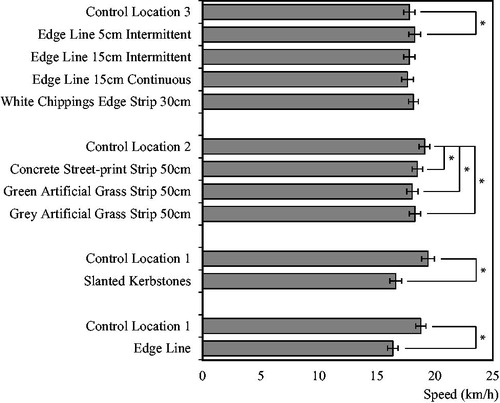Figures & data
Table 1. Participants’ demographic characteristics.
Figure 1. All conditions from Experiment 1. (A) Edge Lines, (B) White Slanted Kerbstones, (C) Grey Artificial Grass Strips, (D) Green Artificial Grass Strips, (E) Concrete Street-print Strips, (F) Control Location 1, (G) Control Location 2.
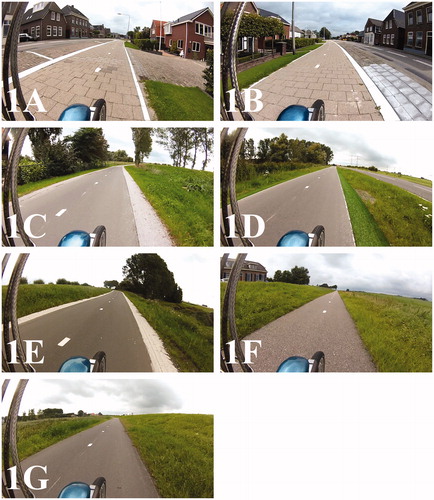
Table 2. Experimental conditions properties.
Figure 2. All conditions from Experiment 2. (A) Intermittent Edge Lines 5 cm, (B) Intermittent Edge Lines 15 cm, (C) Continuous Edge Lines 15 cm, (D) 30 cm White Chippings Edge Strip, (E) Control Location 3.

Figure 3. The lateral position measurement process with VLC Media Player™ and JRuler Pro™. In this example, the lateral position is measured and calculated as 75 cm + 12 cm = 87 cm.
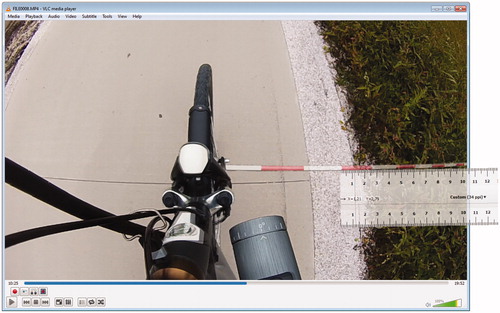
Figure 4. A schematic representation of the conditions for Experiment 1 (left: 1A = Edge Line, 1B = Slanted Kerbstones, 1C = Grey Artificial Grass, 1D = Green Artificial Grass, 1E = Street-print, 1F = Control Location 1, 1G = Control Location 2) and Experiment 2 (right: 2A = Intermittent Edge Lines 5 cm, 2B = Intermittent Edge Lines 15 cm, 2C = Continuous Edge Lines 15 cm, 2D = White Chippings Edge Strip, 2E = Control Location 3). The notch represents the edge of the path that was used to measure the lateral position.
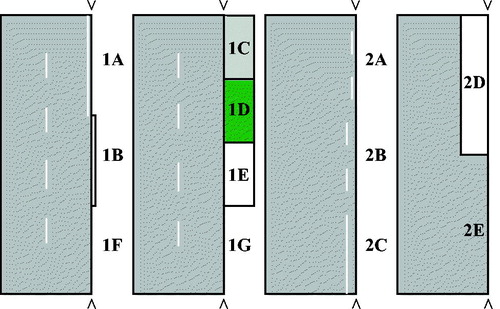
Figure 5. The average lateral position (in cm) per condition: 0 = right hand cycle path edge as indicated in . The error bars represent the standard error of the mean (S.E.).
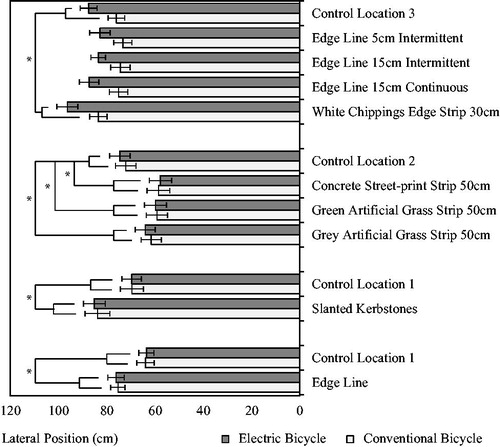
Figure 6. The average SDLP (in cm) per condition. The error bars represent the standard error of the mean (S.E.).

Table 3. Descriptive statistics and non-parametric test results for the differences between users of conventional and electric bicycles, collapsed over all conditions.
Table 4. The results for the pairwise effects on lateral position for the conditions in Experiment 1 and 2.
Table 5. Lateral position effects of bicycle type for each condition in Experiment 2.
Table 6. The results for the pairwise effects on swerving (SDLP) for the conditions in Experiment 1 and 2.
Table 7. The results for the pairwise effects on speed for the conditions in Experiment 1 and 2.
Table 8. Mann–Whitney U significant test results (α ≤ .0055) for the effects of bicycle type on the Ipsative Scores of Speed per Treatment.
Table 9. Subjective opinions in percentages for the treatments in Experiment 1.
Table 10. Subjective opinions in percentages for the treatments in Experiment 2.

